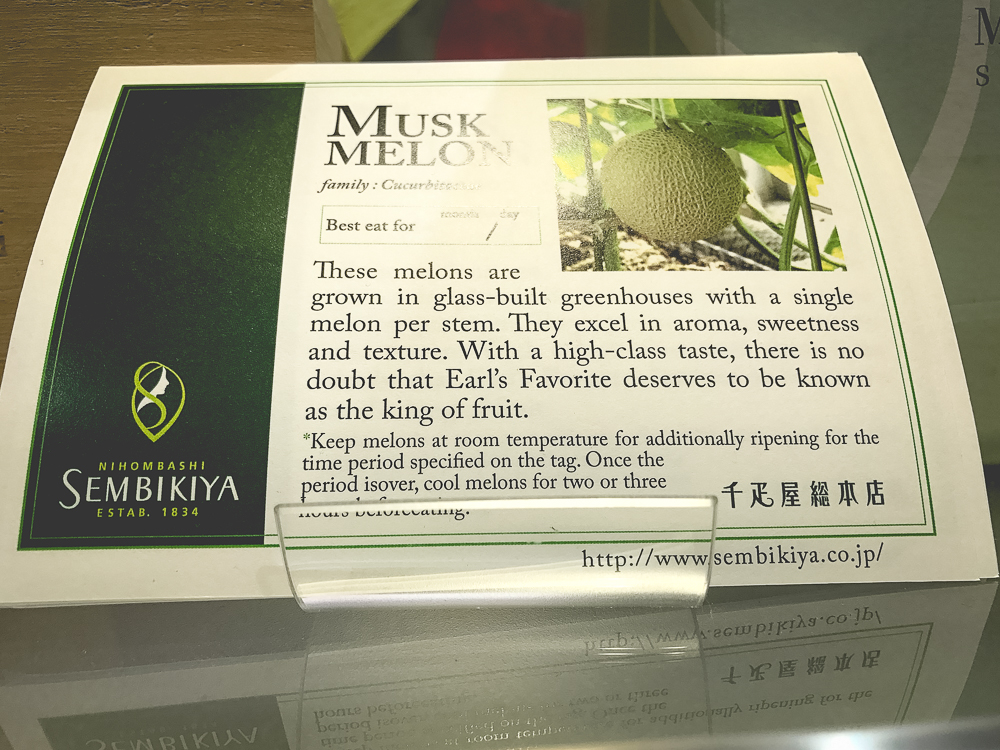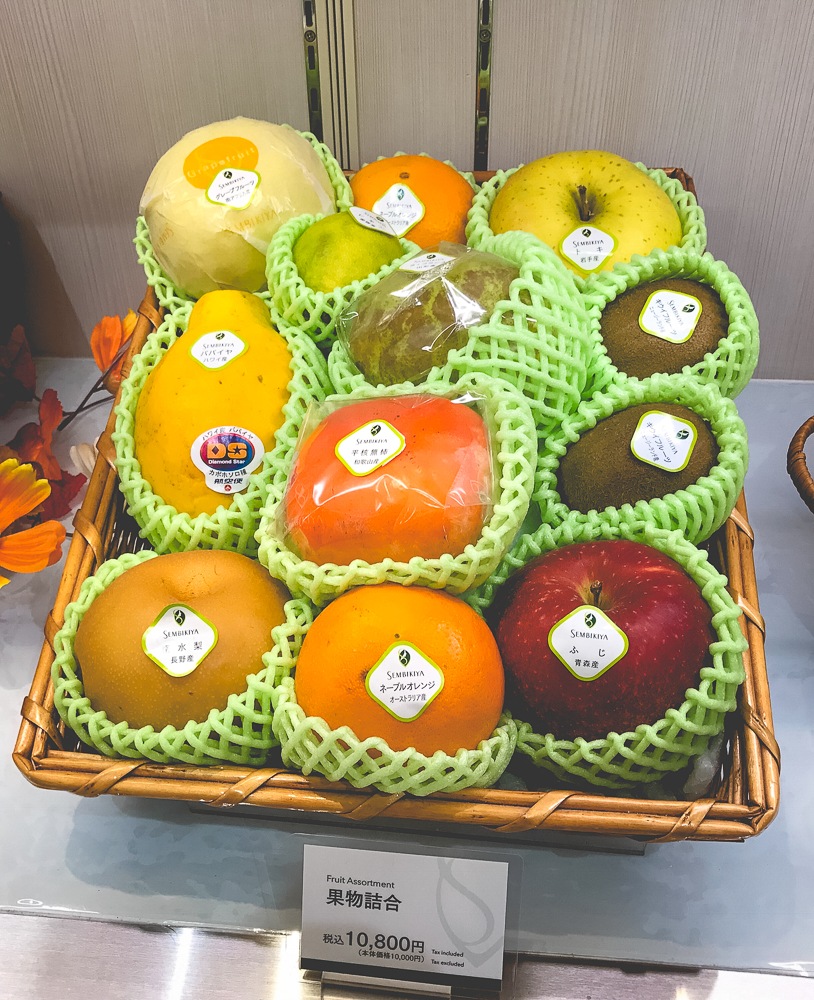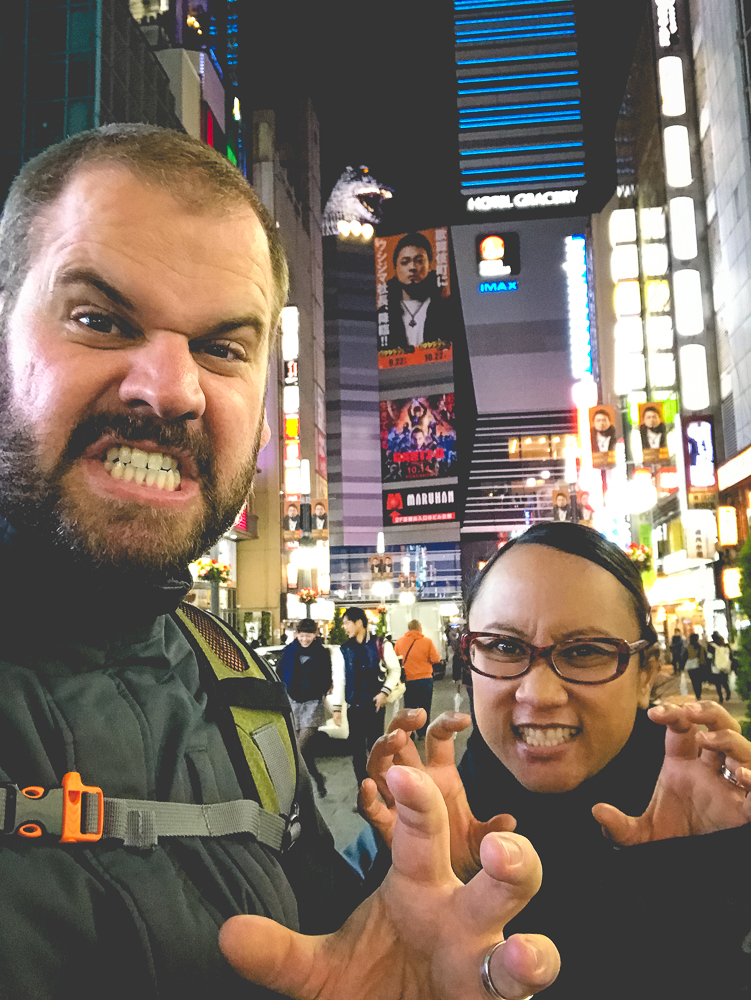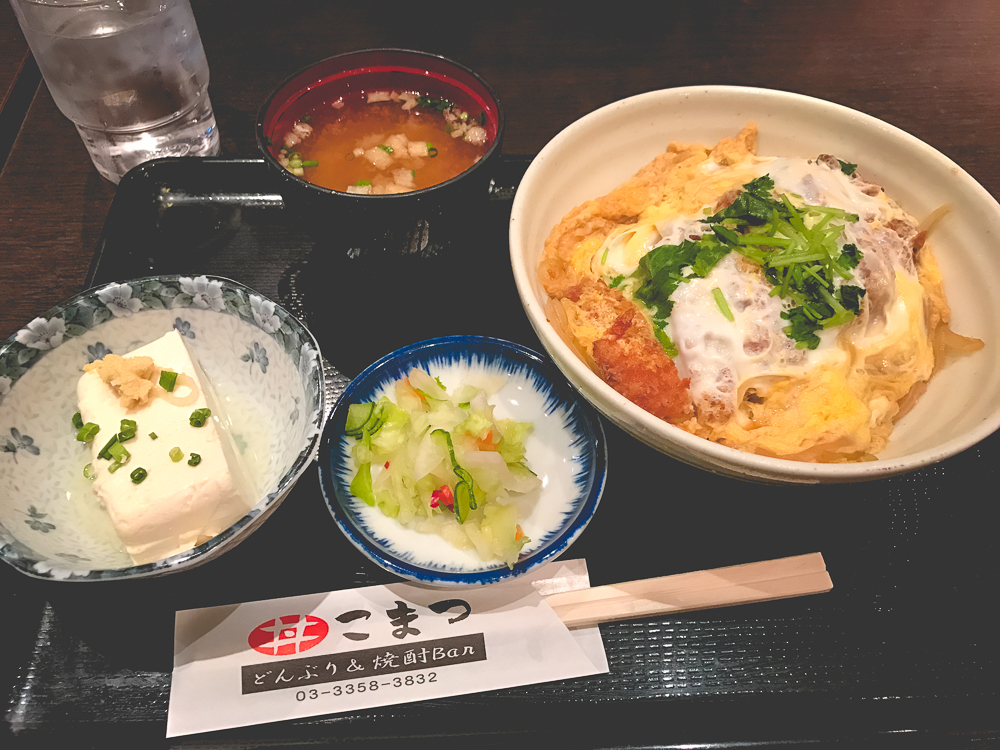We awoke on our second day in Tokyo, hungry for more. If you took that metaphorically—as in, we’re hungry for the further exploration of this amazing city—you’re not wrong. But I was being literal: we were hungry!
Chuck knew exactly what he wanted: Onigiri, Japanese rice balls. Available at most convenience stores, these rice balls come with a variety of fillings and flavors, like egg, fish, meats, veggies, pickled goods, soy-sauce, and miso. The sticky rice holds its form excellently, making onigiri the perfect portable breakfast solution.
But the rest of us were skeptical. Even with Chuck’s excellent salesmanship, onigiri (which all trip-long we incorrectly pronounced as “oh-niggity”, like “no diggity”) simply didn’t sound appealing to our early morning appetites. And so, as Chuck ran to a nearby 7-11 for onigiri, Cindy, Chris, and I popped across the street for some donuts. We took a staircase to the main promenade overlooking the Yamanote Line tracks where, just south of yesterday’s Starbucks, stood a Crispy Creme Donuts. You read that right, a Crispy Creme, in Tokyo. Worse yet, they were still 10 minutes away from opening. That left the three of us staring intensely through the locked glass door, watching the donuts with heavy breaths like the gross Americans we are. #murrica
The staff was kind enough to “soft-open” a few minutes early and we placed our orders right as Chuck was returning with his onigiri. Not wishing to miss a cross-cultural opportunity, even Chuck placed an order for a red bean paste donut (red bean being a popular, sweet filling in Japanese desserts).
Taking advantage of the empty, upstairs dining area we devoured the donuts without embarrassment. However, Chuck’s onigiri actually looked pretty good! This opened the door for the rest of us to eventually try some. We finished our time in Japan loving onigiri! Sometimes, it just takes a bit of time to get used to new things.
After breakfast, we sat around planning the day and talking about my, er—digestive successes?
Anyway, it’s from this point that we finally started our day! After two transfers on the JR transit lines, we had to take a private subway line. It was our first leg of transport not included in the Japan Rail Pass. The subway was less modern and flashy than the JR transit lines, but costing just a few bucks, it was an efficient way to reach our first destination: Asakusa.
Asakusa seems to be the closest you get to “old Tokyo”.
Now, to my understanding, there isn’t really an “old Tokyo” because of the United States’ firebombing raids on the city during World War II. These bombings were the most destructive of the entire war (and that’s including the two atomic bombings), with over 16 square-miles of city destroyed. This area included Asakusa which was, at the time, a popular entertainment/theatre district. But after the War, the area was rebuilt in its original style (which goes back 300-1,300 years)! Hence, why Asakusa is the closest you get to “old Tokyo”.
We started our visit to Asakusa by passing through the Kaminarimon, a massive, red gate at the entrance to the district. Standing before us on the other side was the Nakamise—a 600 foot long market full of little shops and stalls. Each shop was adorned by lanterns and fake “fall colors” branches and they sold everything from touristy trinkets to authentic (looking) samurai swords. There were also several snack shops, including ice cream, cookies, and red bean dumplings. Chuck and Chris grabbed a few of the dumplings and ducked into a side-alley to eat; apparently it’s frowned upon to walk and eat at the same time.
At the end of the market is another large, red gate and lantern, marking the entrance into the Senso-Ji Temple.
We walked around the temple, observing locals partake in the pre-prayer rituals like burning incense and washing. It’s always a bit unclear to me how far we should enter into historical religious sites—at what point does a “destination” become “a place of worship” (meaning, when does it become rude to take pictures)? We went as far as watching some folks praying and decided to turn back.
On the way out, we saw a massive sandal hanging from the preceding gate. Apparently, it’s good-luck to touch the sandal and so we each took our turns. For some of us, the ritual was a bit easier than others.
Feeling as though we got our fill of everything that was open (again, some sections of the temple, including the large pagoda, were under refurbishment) we made our way back down the market row. Cindy did some souvenir shopping and Chris was interviewed by school children for an English-language project.
Returning to the entrance of the market, we then headed east for a short while along the main road, back towards the subway station. We saw a river just beyond and decided to go check it out. When we reached the shores of the Sumida River, we could see the Asahi Beer Hall (the gold, mug-like building and black building with the gold flame atop) and the Tokyo Skytree (the tall tower, the second tallest in the world). I was going to write a comment about the flame looking like a giant sperm but stumbled upon a passage in Wikipedia that says that some local residents refer to it as a “giant turd” and call the building the “poo building”. You can’t make this stuff up! That is, unless someone on Wikipedia did.
Happy with our fill of the poo, we made our way back into the subway and traveled on it for one more leg to Ginza.
Ginza is a luxurious shopping district. Like many other luxury retail districts around the world, you can find high-end designer storefronts from all of the major Japanese and western brands. We walked up and down the main boulevard and looked at the window displays but only entered two stores.
The first was was Itoya, an awesome stationary shop in a 12-story, thin building. Each of the store’s compact floors was curated around a different aspect of stationary and related products. For example, a floor for greeting cards, a floor for high-end pens, a floor for a plethora of paper types, and a floor for home office supplies. To my delight, one floor had a section dedicated to “travel stationary”, which included maps, globes, luxuriously bound travel journeys, itinerary planning, and travel comfort kits. I ultimately didn’t buy anything (I'm a terrible shopper) but really liked the store.
We also took the time to enter a department store and check out one of Ginza’s fruit parlors. What is a fruit parlor, you say?
Well, apparently when attending a dinner party or something, it is common to give your host a gift, such as some fruit. This is customary in many cultures but the wealthy in Japan have taken it to the next level, paying handsomely for the most perfect, colorful, sweet, blemish-free fruits you can find. The result is luxury fruit shops that more closely resemble jewelry stores, but with gorgeous, overpriced fruit!
If you’re if you’re looking at the price tags unaware, in general, you can convert yen to dollars by moving the decimal place over two spaces to the left. That’s right. That cantaloupe costs about $172 and those fruit baskets ranged from $75 to $214!!!!
Of course, we didn’t have the money to drop on a “Muskmellon” or its pricey companions and so, we simply walked among the aisles, ashamedly taking our pictures before high-tailing it out of there. We made our way back to Shinjuku and were ready for our next round of afternoon napping when we saw something in the window of a KFC—the Chizza. Half chicken, half pizza, the Chizza is a pizza that substitutes fried chicken in place of a bread crust. Knowing we couldn’t get it in America, we had to try it and yes—we regretted doing so!
With gurgling stomachs, we made our way back into our hotel rooms to nap in preparation for a night out. Despite staying in Shinjuku, we had yet to truly experience the area and so, once we were up, it was time to explore the town!
Shinjuku is probably what you would consider “classic, modern Tokyo”, if that makes sense. Clean streets and cluttered buildings, bright neon signs begging for your attention and old electric wires streaming through the alleys between modern, blocky buildings. We walked up and down the streets, checking out the scene when we started to grow hungry. With so much to chose from, it was hard to narrow an option down. At one point, I made the mistake of pulling up “Yelp!”—there was just too much food in the area to make sense of it. Finally, we found a restaurant with no line and room at the bar and so we darted in to get some food.
I had the curry tonkatsu, a different preparation than the day before but just as good!
Afterwards, we went back out into the district. The streets were so perfectly-Tokyo that it felt almost as though Godzilla itself could make its monstrous way around the corner at any time. And to our surprise (ok, maybe not) that’s just what happened!
Located on top of the Toho Cinemas (Toho is the producer of all Godzilla films) was a statue of Godzilla emerging over the rooftops. It was a cute nod to the classic creature and with all of the neon, a great night-time photo op.
After grabbing our pictures, we were ready to begin the journey back to our hotel. We passed the Robot Restaurant where, for $70 a head you could experience a “robot themed cabaret show”—whatever that means. We looked into the Golden Gai pub district, which was rows of alleys lined up with tiny pubs and taverns (some as small as 4 seats at a bar) but the group definitely wasn’t adventurous enough to go exploring.
In our defense, it was also clear that we were starting to enter the less, erm—family friendly part of town? Shinjuku is terrifically cool and terrifically Japanese, but it is also hope to the Kabukicho red light district (and it’s no secret). At one point, it was pretty clear that we were in an area advertising the 'accompaniment of a hostess', an experience that none of us were in the market for! Stack on top of it the fact that most of those clubs and brothels are operated by the Yakuza (the Japanese mafia) and we knew that our experience of Japan was better suited for the Baskin Robbins than the Kabukicho.
We made our way back up the streets towards our hotel. There was a soft, misty-rain that would come and go, reaffirming that it was time to conclude the evening. Eventually, we made it back to our rooms and settled in for one more full day in Tokyo.
And with that, we have concluded our second day in Tokyo! For a great recap of our experience, it's worth it to check out our video of the day's events, portrayed in the video below!:
And again, if you've made it this far and would love some more awesome photos from the day, check them out in the gallery below!:




















































































































